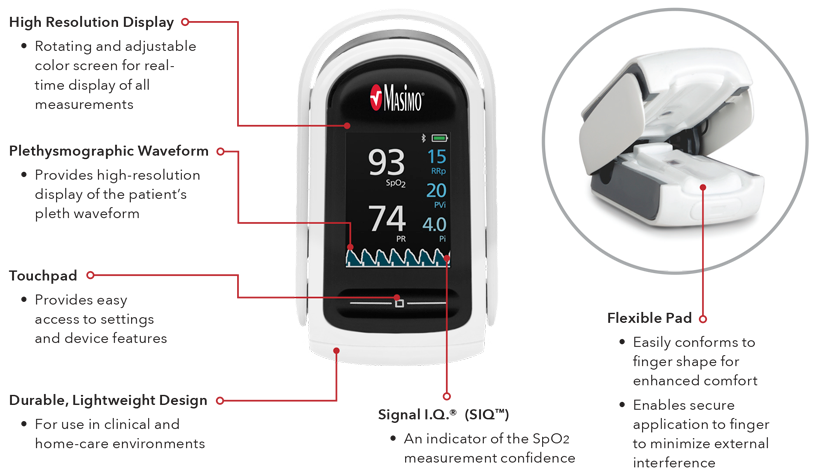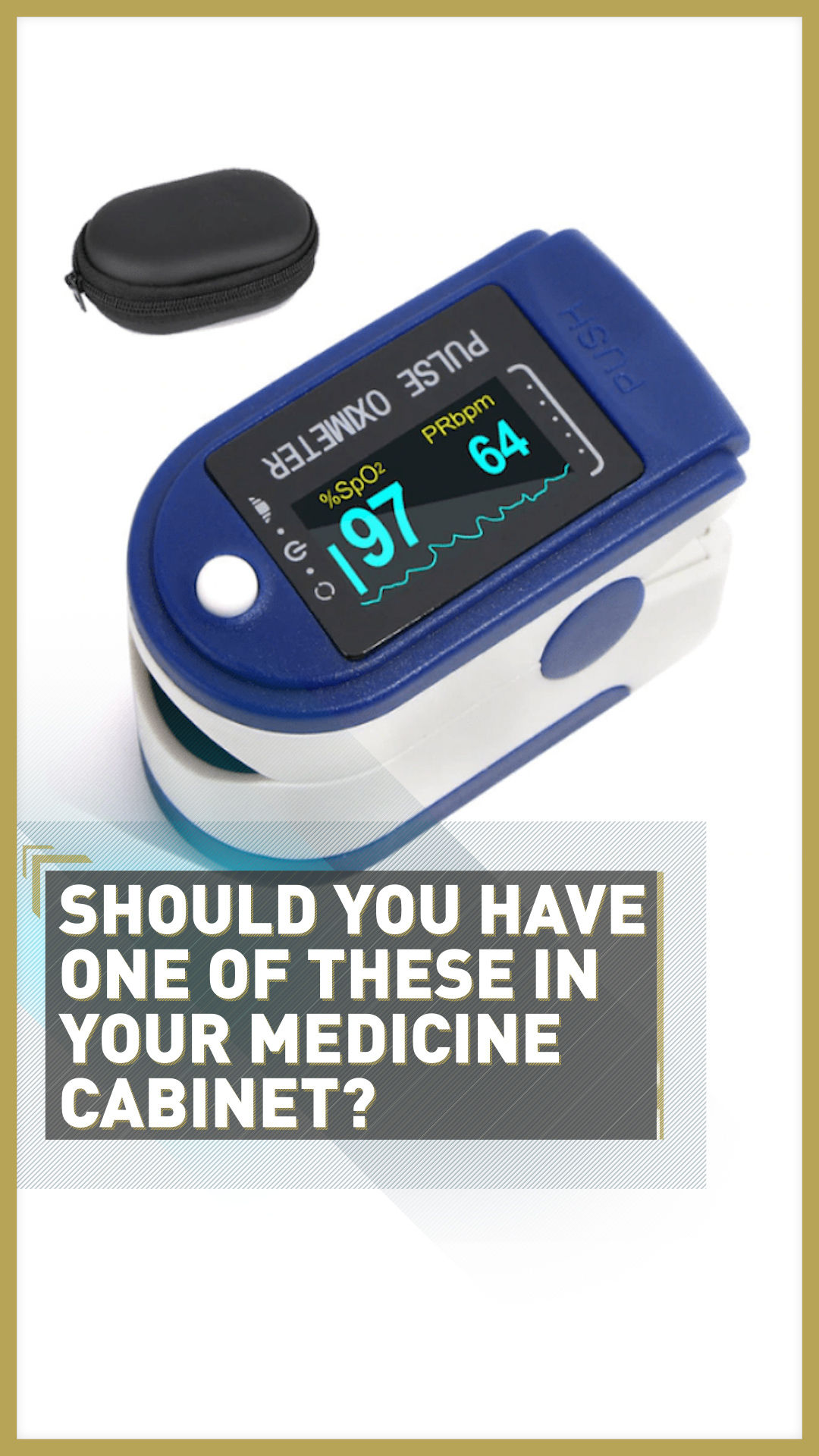Zacurate Premium 500E Sporting/Aviation Fingertip Pulse Oximeter Blood Oxygen Saturation. How to use this pulse oximeter Make sure your hand is warm to the touch. Then rest it on your chest for five minutes. Switch the pulse oximeter on. Then attach the clip of the pulse oximeter to the finger next to your thumb, or your middle finger. Watch the numbers on the pulse oximeter.%SpO2 97 PR bpm 60. Dear Curious, A pulse oximeter can be a very useful tool for a COPD patient, providing you use it correctly and realize it has limitations. The pulse oximeter measures two distinct things: The first number that comes up is most often the pulse rate. Usually this number is marked by a small heart.
© Juan R. Velasco/Shutterstock Pulse oximeters clip on to your finger, toe, or earlobe to measure blood oxygen levels. Juan R. Velasco/Shutterstock- A pulse oximeter is a small device that can measure the oxygen saturation in your blood.
- Pulse oximetry is useful for people with chronic lung or heart conditions, who need to monitor how well oxygen is being sent from the heart and lungs out to the furthest parts of the body.
- To use a pulse oximeter, you'll clip the device on your toe, finger, or earlobe — here's to use it properly so you can get an accurate reading.
- This article was medically reviewed by Jason R. McKnight, MD, MS, a family medicine physician and clinical assistant professor at Texas A&M College of Medicine.
- TOP PICK: Innovo Deluxe Fingertip Pulse Oximeter with Plethysmograph and Perfusion Index.
- 12 hours ago COVID-19: What is a pulse oximeter and how to use it? Step-by-step guide - Oximeters are used to measure the oxygen level and heart rate and are extremely useful for coronavirus patients.
A pulse oximeter is a small device that typically clips on to your finger, toe, or earlobe to measure oxygen levels in the blood.
Pulse oximetry is a quick and easy way to determine how well oxygen is being sent from the heart and lungs out to the furthest parts of the body, which can help determine if your heart and lungs are functioning properly.
Pulse oximeters can be used to gauge warning signs for chronic lung or heart conditions, and may help determine whether you should seek medical attention for the coronavirus.
Here's what you need to know about what exactly a pulse oximeter measures, how it works, and how you can use it properly.
What does a pulse oximeter measure?
A pulse oximeter measures the oxygen saturation of your blood. Essentially, this percentage is a calculation of how much oxygen is in the blood, with 100% being 'fully saturated' and the optimal level.
And while this simple non-invasive medical tool is available over the counter in many pharmacies, it's not necessary for most people.
'Unless you have a chronic heart or lung condition that affects your oxygen saturation on a regular basis, most individuals don't need one in their home,' says Albert Rizzo, MD, Chief Medical Officer for the American Lung Association.

Those with lung or heart conditions — such as chronic obstructive pulmonary disease (COPD) or heart failure — may be prescribed home oxygen therapy by their doctor, says Rizzo, and a pulse oximeter can help them to monitor whether the use of oxygen at home is improving their condition or not.
Pulse oximeters have also been used to indicate severe cases of COVID-19. That's because the coronavirus can cause a decrease in blood oxygen levels — though if this occurs, it's likely that you'll recognize other symptoms before needing to use a pulse oximeter.
In fact, Rizzo says that oxygen saturation by itself is often not the best indicator of medical conditions, and other symptoms are just as important to tell your doctor.
Other warning signs of low blood oxygen levels may include:
- Increased heart rate
- increased breathing rate
- Feeling shortness of breath or gasping for air
- Inability to do an activity that you did before without getting out of breath
For everyday health, you shouldn't rely on pulse oximeter readings alone, says William Berry, Research Scientist at Harvard T.H. Chan School of Public Health. The oximeter numbers are only estimates of your blood oxygen levels — and they should be taken in context.
How does a pulse oximeter work?

To get the most accurate reading on a pulse oximeter, there are a few simple steps, according to the World Health Organization:
- Position the probe correctly. Depending on the device, this will usually be on the finger, toe, or earlobe. Make sure it is well-fitted, and not being forced on: for example, try the second toe rather than the big toe. If the probe is too loose or too tight, it may allow extra light in, which will impact the reading.
- Make sure you're sitting still. Shaking or shivering will affect the reading, and may make it seem much lower than it actually is.
- Remove any nail polish. If you're wearing colored nail polish, this might affect the reading. Finger tattoos or henna dye can also affect the reading: in this case, choose a different finger, toe, or earlobe. Cold fingers or toes can also cause false readings.
There are many types of pulse oximeters, which come with varying features and are sold at a range of prices, so you'll want to find the best pulse oximeter for your purposes.
What Should Pulse Oximeter Read
A 2016 comparison between the accuracy of the pocket or standard pulse oximeter found that the standard oximeter had a precision error of 1.8%, while the pocket version showed 2.21% error. One 2018 study of pulse oximeters used in heart patients suggested that earlobe probes had greater accuracy.
If you think your pulse oximeter might not be accurate, Rizzo suggests checking the pulse reading or heart rate on the pulse oximeter against your own reading of your pulse.
How to read a pulse oximeter
According to WHO, a reading of 95% to 100% on the pulse oximeter is considered healthy and isn't a cause for concern.
Best Finger Pulse Oximeter Reviews
If you have no underlying medical conditions, your levels should generally be at 95 or higher. But for people with chronic conditions, it's important to talk with your doctor about what the appropriate reading should be for you, and when you should seek medical attention.

For reference, lower levels of blood oxygen saturation may indicate:

- Blocked airways
- Difficulty breathing
- Lung infection
- Poor blood circulation
- Drug interference from anesthesia, muscle relaxants, or anaphylaxis
In addition, if your pulse oximeter reading drops during exercise, Rizzo says it can be a sign of an underlying lung or heart condition and you should speak with your doctor.
Related articles from our Health Reference library:
Read the original article on Insider